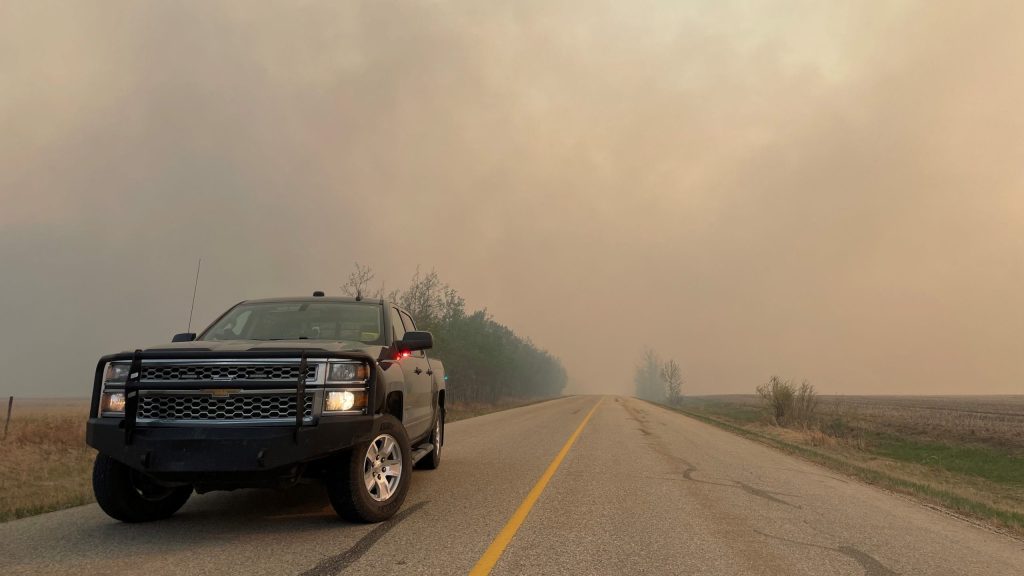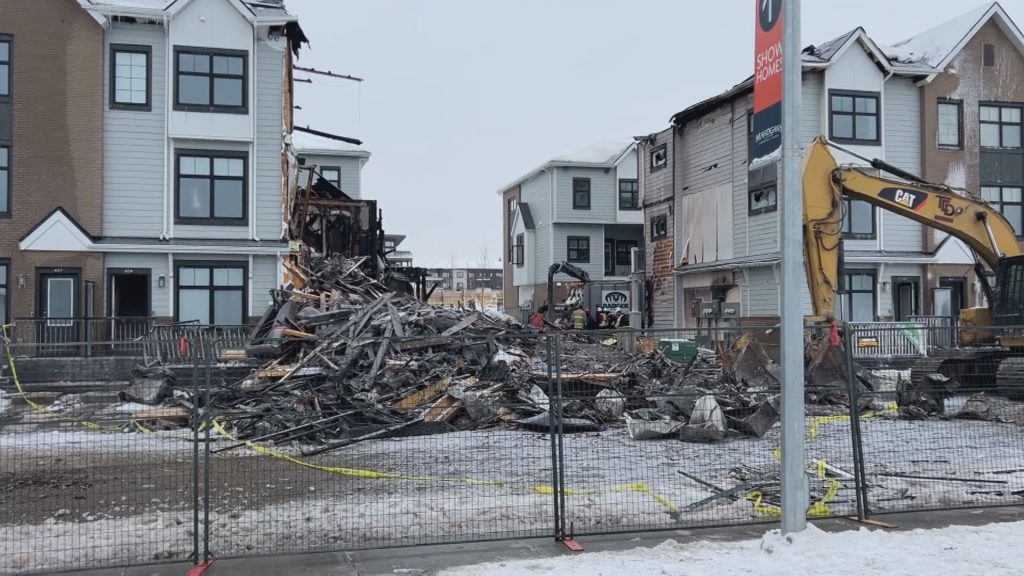Alberta wildfire activity picking up with hot, dry conditions expected into next week

Posted May 13, 2023 4:22 pm.
Wildfire activity picked up in Alberta Saturday due to hot and dry conditions, with officials focused on building fire guards to slow down the blazes.
Alberta saw widespread crossover conditions – when temperatures are higher than relative humidity – leading to extreme wildfire behaviour.
Officials warned new fires can ignite easily and spread rapidly – a new set of challenges for firefighters on the ground who have been battling blazes in the province.
Those hot and dry conditions are expected into next week.
There were 83 active wildfires in the province as of Saturday afternoon, including 21 out of control.
The 470,000 hectares that have burned so far this year make 2023 one of the 10 worst seasons on record. The wildfire season in Alberta runs annually from March 1 to Oct. 31.
With 440k hectares burned so far this wildlife season in Alberta, it’s now one of the ten worst seasons on record.
Wildfire season tune from March 1 to October 31st. #yeg #yyc #abwildfire pic.twitter.com/NYo5RiWXNU
— Courtney Theriault (@cspotweet) May 13, 2023
About 16,500 people from several other communities in central and northern Alberta remained out of their homes amid 19 states of local emergencies.
Areas of concern include Grande Prairie, Fox Creek and Drayton Valley.
Leduc County evacuation order
Leduc County issued an evacuation order Saturday afternoon for some of its residents near – but excluding – the Town of Devon, southwest of Edmonton.
The wildfire is three kilometres west of Devon and three kilometres south of the North Saskatchewan River. The province says wind is pushing the wildfire north towards the river.
MORE ON ALBERTA WILDFIRES:
- Alberta wildfire volatility threatened with increased heat
- Grande Prairie resident fighting wildfire nearly ran over fire crews with bulldozer, county warns
- Drayton Valley evacuees expected to be out of homes for at least another week
The order covers residents from Township Road 504 north to the North Saskatchewan River between Range Road 270 and Range Road 265.
“Everyone in the affected area must evacuate immediately,” Leduc County said in a Facebook post. “This area does not include the Town of Devon. Gather pets, important documents and enough food and water for at least three days.”
Evacuees are urged to register with the county once evacuated.
Building fire guards
Officials are putting an emphasis on fire guards – when land is plowed by bulldozers to eliminate “fuel” (trees, vegetation) – to control the spread of the wildfires. Fire crews are also conducting burnout operations, when vegetation between a wildfire and the fire guard is burned on purpose.
Premier Danielle Smith was in Grande Prairie on Friday surveying the fire zone and meeting with local officials and Indigenous leaders.
On Saturday morning while making an election campaign announcement on health care, she said the government had just approved construction of “a pretty extensive fire guard for the city.”
Roughly 1,500 wildland firefighters, heavy equipment and air tankers are working to fight the wildfires. More than 300 of those came from Parks Canada, British Columbia, Quebec, Ontario, Yukon, New Brunswick, Nova Scotia, Oregon and Alaska.
WATCH: Alberta wildfire update (May 13, 2023)
The province says another 200 firefighters are on their way from the Unites States.
More than 200 Canadian military personnel, with 100 more expected in the coming days, are performing mop-up operations and “basic firefighting duties.” They are in Grande Prairie and Drayton Valley.
—With files from Alejandro Melgar and The Canadian Press








